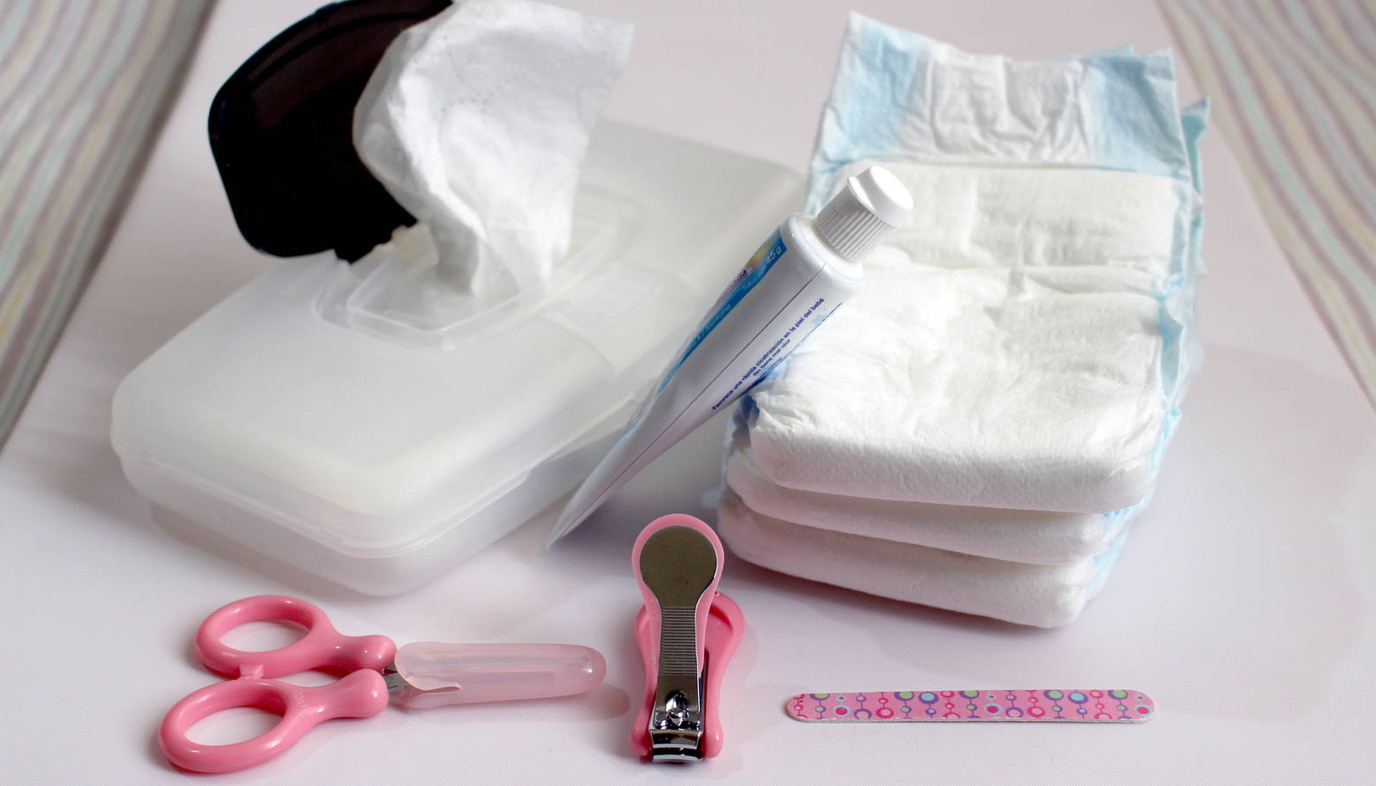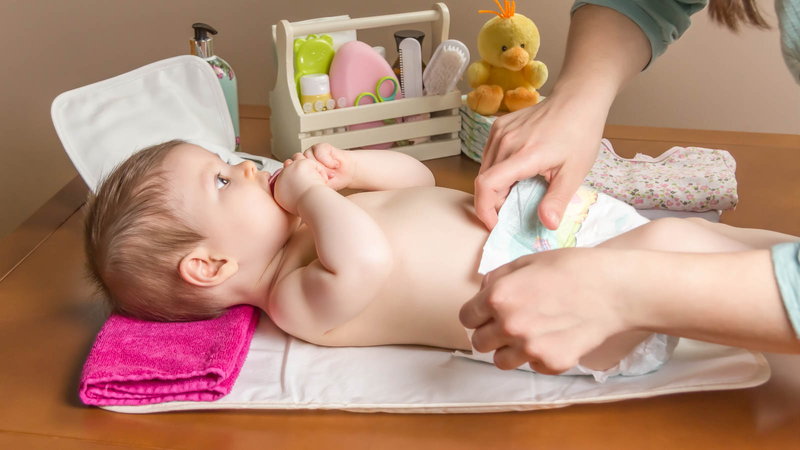
Your baby has a diaper rash and you’ve tried all the conventional treatments, but it still won’t go away. What should you do? If your baby has a diaper rash that doesn’t go away after a week with conventional treatments, you may need to call your pediatrician. Likewise, if your baby has a fever, diarrhea, or illness, or if the rash has spread to other parts of his body, you should make an appointment with your pediatrician.
Causes of Persistent Diaper Rash
- simple irritation (from sitting in urine or stools too long, or sensitivity to the urine or stools)
- food sensitivities
- yeast infection
- bacterial infection (like staph or strep)
- sensitivity to baby wipes
- colon bacteria imbalance
- cloth diaper sensitivities (to detergents or materials in cloth diapers)
For a persistent diaper rash, you need to get to the bottom of what is causing the rash. It may take some time or experimenting to determine what is causing your baby’s diaper rash. However, because a diaper rash can be caused by a yeast or bacterial infection or other conditions, you should get your doctor to take a look at the rash if it has persisted for longer than a week.

Diaper Rashes Caused by an Infection
A yeast infection rash looks different than an ordinary diaper rash. It is extremely red, and you’ll see little raised bumps on the edges of the rash. As the rash spreads, you may see red “satellite” legions that look like red pimples and are further away from the main rash. A distinguishing characteristic of yeast rashes is that they are often seen in the folds and creases of the skin around the groin area.
If your baby has a bacterial infection, you may see yellow bumps that may be filled with “pus,” or you may notice crusty areas on your baby’s bottom. This is a sign of an infection that may require antibiotic treatment.
Other Causes of Persistent Diaper Rashes
Ammonia Dermatitis and feces breakdown: Sometimes a baby’s rash is caused simply by not keeping him dry enough. Some babies are sensitive to the ammonia that develops as their urine breaks down. This condition is known as ammonia dermatitis. Additionally, when urine turns into ammonia, it creates a more alkaline environment. This can be problematic if your baby sits in urine and feces for too long. Enzymes found in feces cause the skin to break down. Since these enzymes thrive in an alkaline environment, a baby sitting in both urine and feces is more prone to skin break down. Changing your baby’s diaper frequently and controlling the pH level of your baby’s skin will help to clear up and prevent a diaper rash.
PH balance: Normally the pH of your baby’s skin is neutral to slightly acidic. Breastfed babies tend to have slightly acidic stools, whereas formula-fed babies’ stools tend to be slightly alkaline. This is one reason why formula-fed babies are more prone to diaper rash. To improve the pH balance of your baby’s skin, try rinsing his bottom with a water and vinegar mixture. The vinegar will help to restore the proper pH balance of his skin. If your baby is using cloth diapers, you can add a 1/4 to 1/2 cup of vinegar to your final rinse cycle when you wash his diapers to help as well.
Sensitivity to baby wipes: Some babies are very sensitive to the chemicals in baby wipes. You may be able to switch to wipes designed for sensitive skin, but if your baby is having problems with a persistent diaper rash, you should avoid wipes altogether until the rash clears up. You can just use a wash cloth with warm water to wipe with.
Digestive issues, food sensitivities, and colon health: Anything that alters the pH level of your baby’s urine or feces can cause diaper rash. Certain foods may cause your baby’s urine or stools to be more acidic or alkaline. An imbalance in either direction can be a problem. Acidic stools may cause a chemical burn-like rash; alkaline stools will cause the enzymes in feces to flourish, leading to skin break down.
If your baby has a food sensitivity, dairy is the likely culprit. It is one of the most common food sensitivities in babies. Babies that are sensitive to dairy may have green stools, mucus stools, or stools with blood in them. Naturally, these poorly digested stools can cause problems with skin break down and diaper rash. If your baby has started on solid foods, he may have issues tolerating some of the acidic foods as well. Foods like citrus fruits, apples, cherries, pears, prunes, peaches, strawberries and tomatoes are more acidic. If your baby’s rash appears shortly after starting solids, you may want to eliminate the acidic foods to see if the rash goes away. Your baby just may be more sensitive to these foods.
Colon health is also important for healthy digestion and the prevention of diaper rash. In your colon, there are both good bacteria and bad bacteria. The good bacteria help your body to break down food, protect your gut from the bad bacteria, and give your immune system a boost. When your baby is born, he gets some of mom's good bacteria. This, along with the first feedings helps your baby to establish the colonization of good bacteria in his gut. If your baby doesn’t have enough good bacteria, he can have problems with poorly digested stools or diarrhea, which can lead to diaper rash.
Taking a probiotic supplement may help. Probiotics are a form of the good bacteria that grows in your gut. Talk to your pediatrician about how much and how to give probiotics to your baby. Generally a half capsule to one capsule of probiotics once a day is recommended, but consult your doctor for the specific dosage for your baby. Probiotics can also be used topically to treat diaper rash. Just mix one capsule with water, make a paste with it, and spread it on your baby’s bottom.

Special considerations for cloth diaperers
Usually babies have fewer diaper rashes with cloth diapers than disposables. However, babies with sensitive skin may have issues with ammonia dermatitis or sensitivity to certain materials in cloth diapers. It is important to keep your baby’s bottom dry. You may need to change your baby’s diaper more frequently if you are cloth diapering because they are not super-absorbent like disposables. Aside from keeping your baby dry, you may need to experiment with different diapers if your baby has sensitive skin. Look for diapers made with absorbent breathable material. If you are using a waterproof cover this may trap moisture in. You may want to switch to a fleece or wool cover that is more breathable. In addition to this, if your baby develops a yeast or bacterial rash while using cloth diapers, it is important to disinfect your diapers. Otherwise, your baby’s bottom will continue to get reinfected. The best way to be sure that your diapers are completely disinfected is put them in a pot of boiling water for around 15 minutes to insure that all the bacteria is killed.
Treating a Persistent Diaper Rash
The biggest thing you need to do to rid your baby of a diaper rash that just won’t go away is to find the cause of it. You’ll also want to use some type of ointment or diaper rash cream to help his bottom heal while you are addressing the underlying cause of his diaper rash. If you ask your mom friends about their favorite diaper ointment, you’ll probably find that everyone has a different opinion on which products are best. There are a few products, however, that are highly recommended by moms. These include Aquaphor Baby Healing Ointment, Triple Paste Medicated Ointment, and Calmoseptine ointment.
Along with using an ointment to keep your baby protected from moisture, you should also focus on keeping him clean and dry. After each change, wash his bottom with mild soap and water. Then either air dry or gently blow dry his bottom with a hair dryer on a low setting. This will insure that he is completely clean and dry after each change.
If your baby's diaper rash continues to persist, consult your doctor.
*Also see Natural Remedies for Diaper Rash
